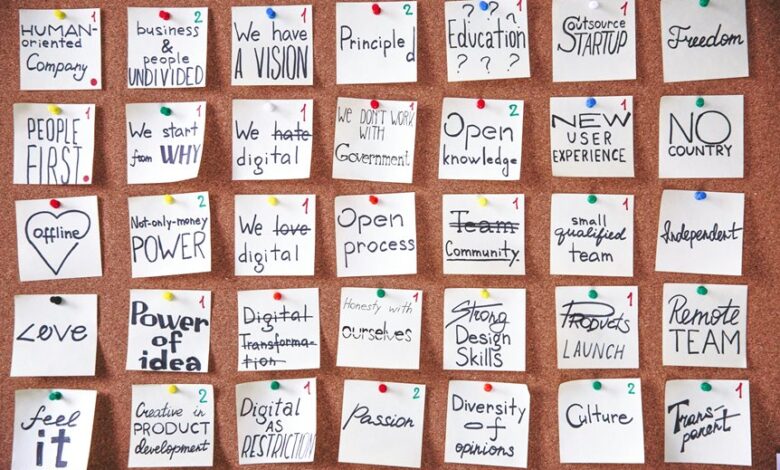
Mastering Organizational Development 3511620302 requires a strategic approach to enhancing effectiveness and adaptability. Leaders must assess organizational strengths and weaknesses to align frameworks with operational realities. The integration of behavioral science plays a crucial role in fostering engagement and aligning individual aspirations with collective goals. However, the nuances of effective change management, communication, and a culture of continuous improvement raise critical questions about implementation and outcomes. What strategies will ultimately drive resilience and innovation?
Understanding Organizational Development
Organizational development (OD) serves as a critical framework for enhancing an organization’s effectiveness and adaptability.
Through systematic organizational assessments, leaders can identify strengths and weaknesses, fostering a culture of continuous improvement.
Development frameworks provide strategic approaches to align goals with operational realities, promoting collaboration among team members.
This process empowers individuals, enhancing both personal growth and organizational resilience in a dynamic environment.
The Role of Behavioral Science in OD
While many factors contribute to effective organizational development, the insights derived from behavioral science play a pivotal role in shaping strategies that enhance workplace dynamics.
By applying behavioral theories, organizations can better understand human behavior, fostering collaboration and engagement.
Such insights enable leaders to create environments that promote autonomy, allowing individuals to thrive while aligning personal goals with organizational objectives for optimal performance.
Key Strategies for Effective Change Management
Effective change management requires a strategic approach that integrates insights from behavioral science to navigate the complexities of organizational dynamics.
Key strategies include addressing change resistance through transparent communication and fostering stakeholder engagement. By involving stakeholders early and consistently, organizations can facilitate smoother transitions.
This collaborative framework empowers individuals, allowing them to embrace change while aligning organizational goals with personal aspirations for freedom and autonomy.
Enhancing Communication Within Teams
How can teams cultivate a culture of open dialogue to enhance overall performance?
By implementing active listening techniques and establishing robust feedback loops, teams can foster an environment where ideas flow freely.
This strategic approach not only empowers individuals but also enhances collaboration, allowing diverse perspectives to shape outcomes.
Ultimately, a commitment to transparent communication drives innovation and elevates team dynamics, leading to superior results.
Building a Culture of Continuous Improvement
Building a culture of continuous improvement necessitates an organizational embrace of a change mindset, allowing for adaptability in the face of evolving challenges.
By fostering an environment that encourages employee innovation, organizations can harness diverse perspectives and drive meaningful enhancements.
This strategic approach not only cultivates engagement but also positions the organization for sustained success.
Embracing Change Mindset
A culture of continuous improvement thrives on the principles of adaptability and resilience, fostering an environment where change is not merely accepted but embraced.
Organizations that prioritize change resilience exemplify adaptive leadership, encouraging teams to navigate challenges collaboratively.
This mindset cultivates an atmosphere where innovation flourishes, empowering individuals to explore new solutions and driving sustainable growth in an ever-evolving landscape.
Encouraging Employee Innovation
Fostering employee innovation is crucial for organizations aiming to sustain a culture of continuous improvement.
By promoting idea generation and facilitating creative brainstorming sessions, companies empower their workforce to explore unconventional solutions. This collaborative approach not only enhances problem-solving capabilities but also nurtures a sense of ownership among employees.
Ultimately, a commitment to innovation can lead to significant advancements and organizational resilience.
Measuring Success in Organizational Development
How can organizations effectively gauge the impact of their developmental initiatives? Understanding success metrics and performance indicators is vital.
Key strategies include:
- Establishing clear goals for development
- Utilizing qualitative and quantitative assessments
- Engaging stakeholders for comprehensive feedback
- Regularly reviewing and adjusting initiatives based on data
These approaches foster a culture of continuous improvement, enabling organizations to adapt and thrive in dynamic environments.
Conclusion
In conclusion, mastering organizational development is akin to cultivating a garden; it requires nurturing the right conditions for growth, fostering collaboration, and addressing challenges with strategic foresight. By integrating behavioral science and prioritizing effective change management, organizations can thrive amidst adversity. Communication acts as the sunlight that illuminates paths forward, while a culture of continuous improvement serves as the fertile soil from which innovation blossoms. Ultimately, the success of these initiatives is measured by the resilience and adaptability of the organization.
